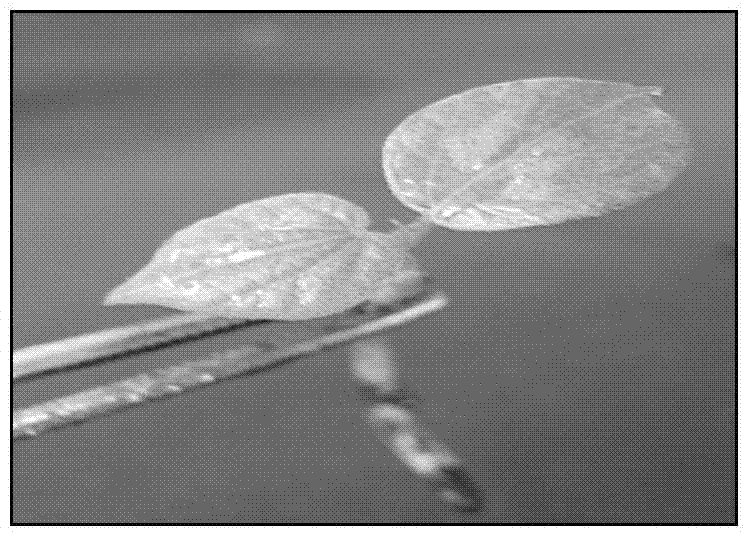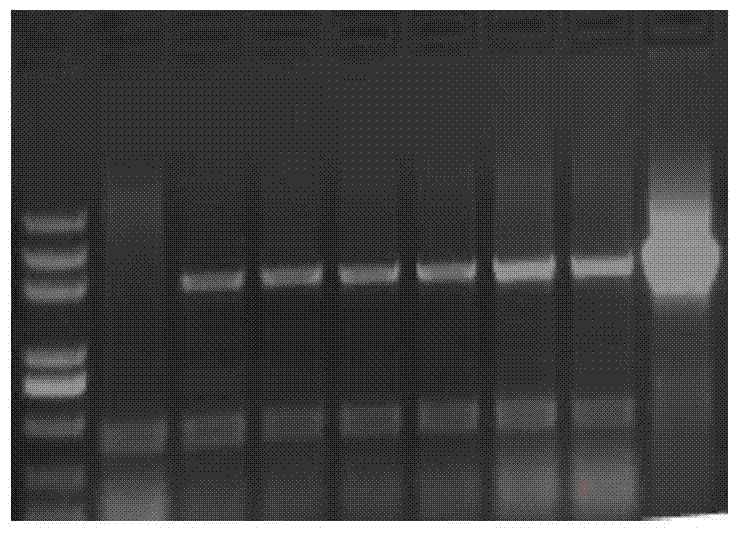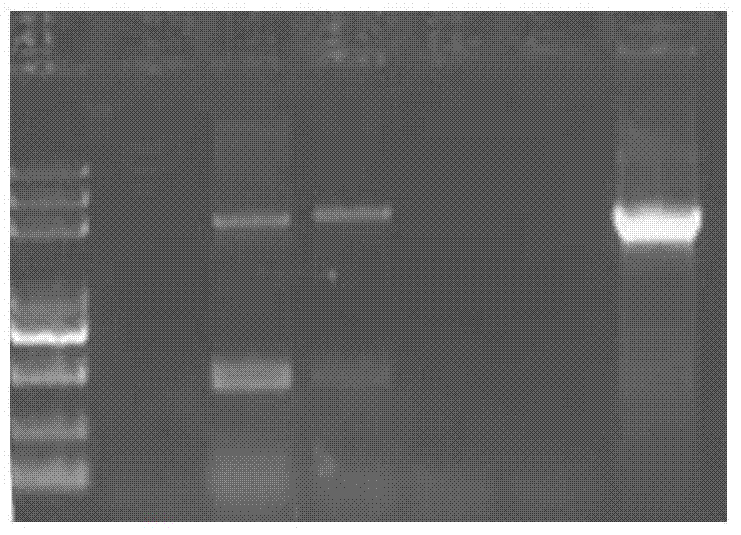Method for obtaining transgenic cotton through agrobacterium-mediated living immature embryo transformation
An Agrobacterium-mediated, living immature embryo technology, applied in biochemical equipment and methods, horticultural methods, genetic engineering, etc., can solve the problem of low multi-copy integration probability of foreign genes, different cotton regeneration ability, long tissue growth cycle, etc. problems, to achieve the effect of overcoming the long growth cycle, overcoming the limitations of cotton lines, and having a short growth cycle
- Summary
- Abstract
- Description
- Claims
- Application Information
AI Technical Summary
Problems solved by technology
Method used
Image
Examples
Embodiment 1
[0035] The method for obtaining transgenic cotton by germline transformation of the present embodiment consists of the following steps:
[0036] 1. Sterile embryo stripping
[0037] Mix 10mL of 30% hydrogen peroxide and 90mL of sterile water in a sterilized Erlenmeyer flask to prepare a disinfectant solution. Put the cotton seeds into the disinfectant solution after delinting, soak at 25°C for 24 hours, take out the seeds and put them in a petri dish, cut them The seed coat and 1 / 2 cotyledons are removed, and the remaining cotton embryos are put into a petri dish containing basal medium, and the 1000mL basal medium is composed of the following raw materials:
[0038]
[0039] Mix evenly, adjust the pH to 5.8-6.3, sterilize in a high-pressure steam sterilizer at 0.07 MPa and 115°C for 15 minutes, divide into petri dishes, cool naturally, and prepare a basal medium.
[0040] 2. Preparation of transformation solution
[0041] Add 20 μL of 50 mg / mL kanamycin, 10 μL of 50 mg / m...
Embodiment 2
[0066] The method for obtaining transgenic cotton by germline transformation of the present embodiment consists of the following steps:
[0067] In step 1 of aseptic embryo stripping, mix 10mL of 30% hydrogen peroxide and 90mL of sterile water in a sterilized Erlenmeyer flask to prepare a disinfectant solution, put the cotton seeds into the disinfectant solution, soak at 25°C for 24 hours, The seeds were taken out and placed in a petri dish, the seed coat and 1 / 3 cotyledons were cut off, and the remaining cotton embryos were put into a petri dish containing a basal medium. The raw material ratio and preparation method of the basal medium were the same as in Example 1.
[0068] In step 2 of preparing the transformation solution, add 20 μL of 50 mg / mL kanamycin, 10 μL of 50 mg / mL rifampicin, 20 μL of 50 mg / mL streptomycin, and 1000 μL of Agrobacterium LBA4404 containing the GFP expression vector into 10 mL of LB liquid medium, The GFP expression vector is transformed into Agroba...
Embodiment 3
[0072] The method for obtaining transgenic cotton by germline transformation of the present embodiment consists of the following steps:
[0073] In step 1 of aseptic embryo stripping, mix 10mL of 30% hydrogen peroxide and 90mL of sterile water in a sterilized Erlenmeyer flask to prepare a disinfectant solution, put the cotton seeds into the disinfectant solution, soak at 25°C for 24 hours, The seeds were taken out and placed in a petri dish, the seed coat and 1 / 2 cotyledons were cut off, and the remaining cotton embryos were put into a petri dish containing a basal medium. The raw material ratio and preparation method of the basal medium were the same as in Example 1.
[0074] In step 2 of preparing the transformation solution, add 20 μL of 50 mg / mL kanamycin, 10 μL of 50 mg / mL rifampicin, 20 μL of 50 mg / mL streptomycin, and 1000 μL of Agrobacterium LBA4404 containing the GFP expression vector into 10 mL of LB liquid medium, The GFP expression vector is transformed into Agroba...
PUM
 Login to View More
Login to View More Abstract
Description
Claims
Application Information
 Login to View More
Login to View More - R&D
- Intellectual Property
- Life Sciences
- Materials
- Tech Scout
- Unparalleled Data Quality
- Higher Quality Content
- 60% Fewer Hallucinations
Browse by: Latest US Patents, China's latest patents, Technical Efficacy Thesaurus, Application Domain, Technology Topic, Popular Technical Reports.
© 2025 PatSnap. All rights reserved.Legal|Privacy policy|Modern Slavery Act Transparency Statement|Sitemap|About US| Contact US: help@patsnap.com



